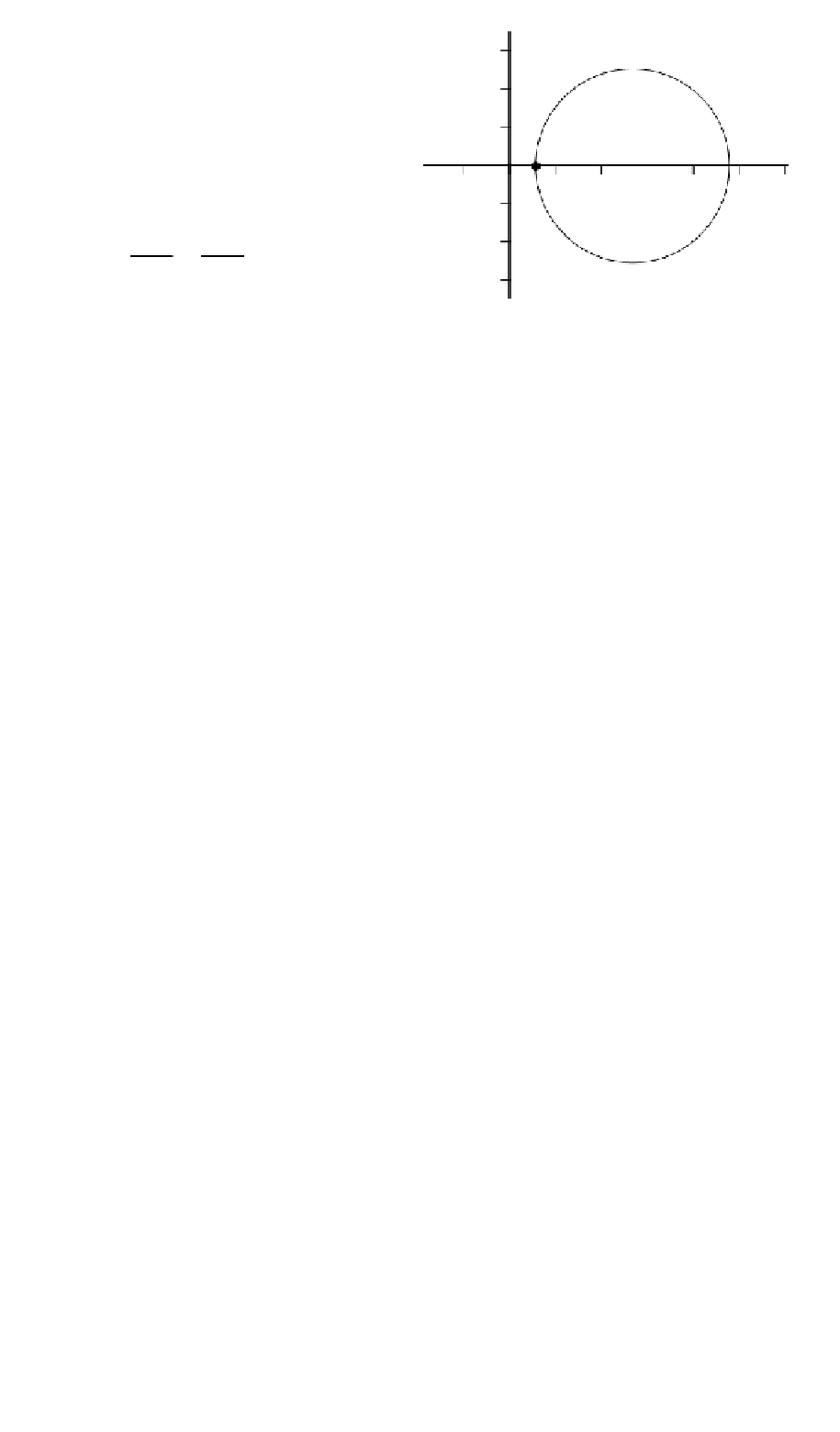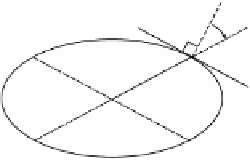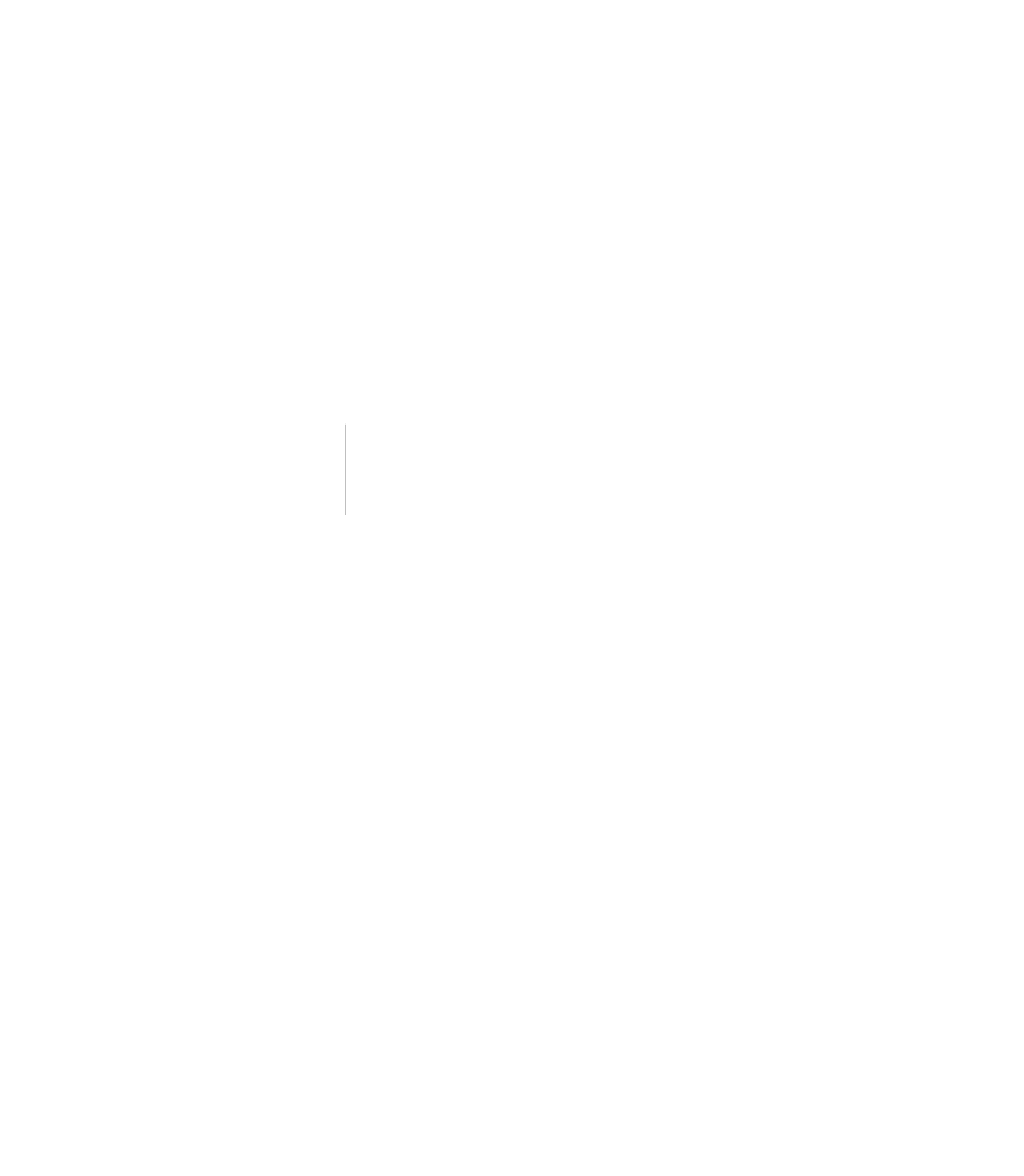Geoscience Reference
In-Depth Information
(a)
(c)
The fundamental strain equations
g
/
l
Considering the quadratic elongation
l
= (1 + e)
2
=
S
2
(1)
g
/
l
l
=
l
1
+
l
3
+
l
1
-
l
3
cos 2
f
2
(2)
2
2
f
To define the strain equations, the reverse of the quadratic
elongation, or
reciprocal quadratic elongation
(
l
') is used:
l
l
l
1
l
3
l
=
1/
l
(3)
' =
l
1
+
l
3
-
l
3
-
l
1
cos 2
l
f
(4)
2
2
Equation 5 relates the ratio between the angular
strain
g
and the linear strain
l
,
with the principal strain axis
and the angle
f
.
(d)
g
/
l
g
/
l
=
l
3
-
l
1
sin 2
f
2
l
3
-
l
1
(5)
l
3
-
l
1
sin 2
u
2
2
2
f
l
(b)
l
+
c
l
1
l
3
l
3
g
=tan
c
p
l
3
-
l
1
cos 2
R
f
f
2
l
1
l
1
+
l
3
2
Fig. 3.90
(a) The fundamental strain equations. The Mohr circles for strain display graphically the relations between the
/
ratio and the
reciprocal quadratic elongation
ratio reflects the relative importance of angular deformation versus linear deformation; (b) strained
circle into an ellipse; (c) the Mohr circle strain diagram; and (d) Relation between the Mohr circle and the fundamental strain equations.
. The
/
distortion, where there is no change in volume or area,
there are two directions that suffer no finite stretch, where
the value of
value, at the right end of the circle, corresponds to
3
and
the minimum, at the left end, to
1
. Once the circle is
plotted, it is possible to calculate the values of
1. Finally two directions of maximum shear
strain are present, corresponding to the lines forming an
angle
/
and
(Fig. 3.90d) for any line forming an angle
respect to the
direction of the major principal strain axis
S
1
. The line is
plotted from the center of the circle at the angle 2
with respect to
S
1
. The Mohr circle for strain
has an obvious relation to the fundamental strain equations
(Equations 4 and 5; Fig. 3.90a) as shown in Fig. 3.90d.
To plot the circle in the coordinate axes, the reciprocal
values
45
sub-
tended from
1
into the upper half of the circle if the
angle is positive or into the lower half if it is negative. The
coordinates of the point of intersection between the line and
the circle have the values
3
are first calculated and rep-
resented along the horizontal axis. The circle will have a
diameter
1
and
3
of
1
and
/
,
. Through
the value of
3
1
and the center will have coordinates
and then that of
S
can be calculated. Knowing
it is
(
1
3
)/2, 0. Note that as the expressions on the
x
-axis
are the reciprocal quadratic elongations, the maximum
also possible to calculate
and finally the angle of shear
strain
.
3.15
Rheology
3.15.1
Rheological models
experiments: the study of strain-stress relations or how the
rocks or other materials respond to stress under certain con-
ditions is the concern of
rheology
. Different kinds of experi-
ments are possible, generally undertaken on centimeter-scale
The reaction of rock bodies and other materials to applied
stresses can only be observed and studied through laboratory








































Search WWH ::

Custom Search